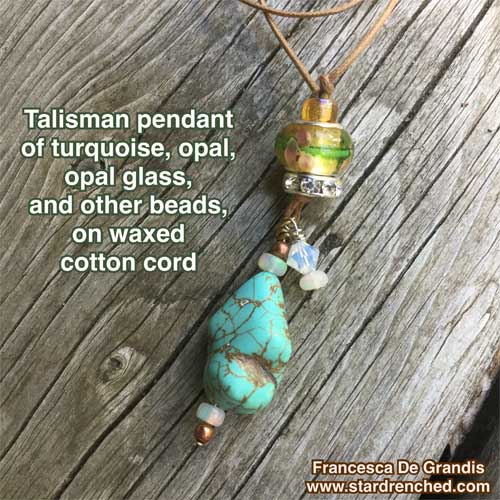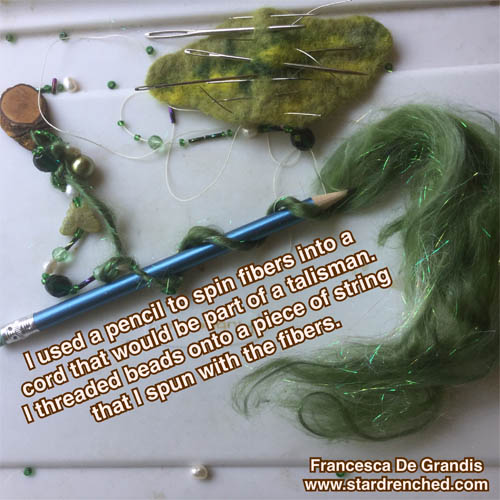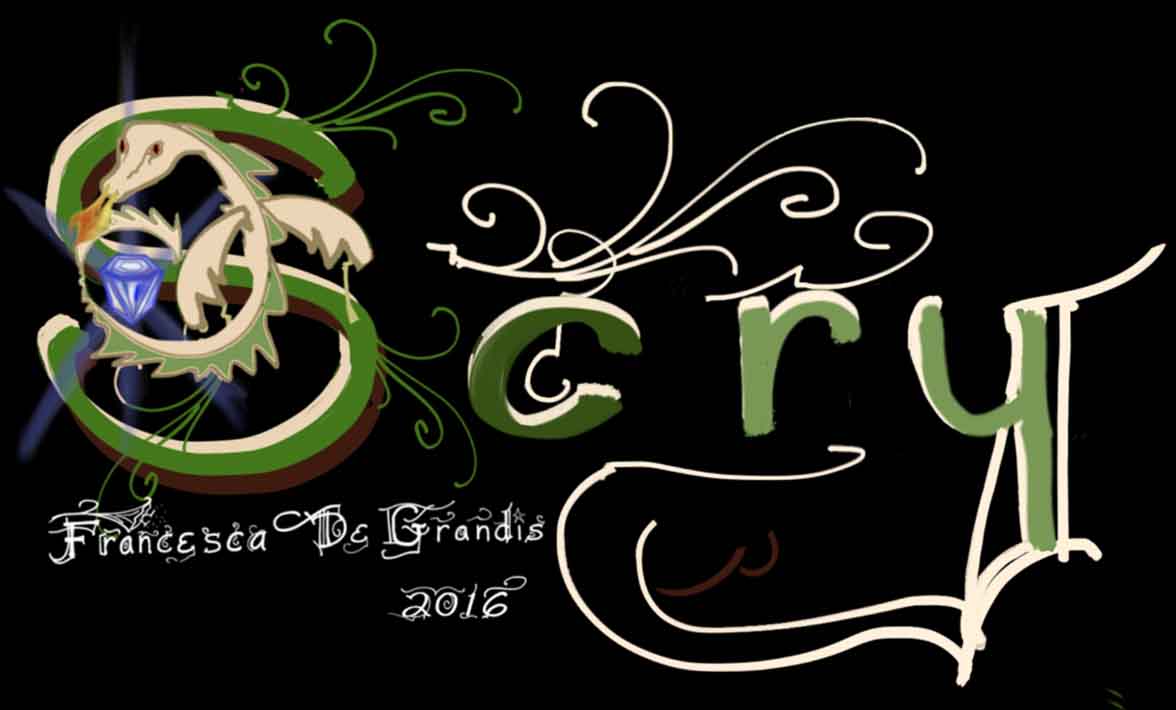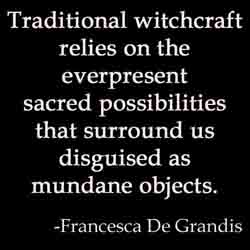I’ve always loved making altars. My house is full of them … or, rather, is one big altar.
Using altars, in all the ways I did before illness descended in 2001, is no longer an option, long story short. Making talismans has picked up the slack. Many are ones I can wear. My body is an altar, and I adorn my body with magic.

Every talismanic pendant, necklace, hair adornment, or scarf I make for myself is magic for my altar. You’ll often see me wearing two or three magic pendants. I almost always wear the same enchanted earrings and rings every day, and did this long before the illness came, but these magical staples are accompanied by ever-changing Fey-touched adornments.
 In the evening, choosing which talismanic pendants, necklaces, hair adornments, or other pieces to wear the next day is a meditation, part of a spell.
In the evening, choosing which talismanic pendants, necklaces, hair adornments, or other pieces to wear the next day is a meditation, part of a spell.
Making talismans for myself, both to wear and to place in my environment, is an important part of my magic and spirituality. I constantly make new items. Crafting and using them have become vital stepping stones. Each one—both the making of it and its use—paves my shaman path, furthering my journey. Each piece calls me, in a different way: calls me back to myself, calls me by one of my true names, calls me to my ancestors.
Others call my heart’s desires to me, invoking prosperity, protection, wisdom in a specific area of my life, success with a specific project, or whatever else I might long for.
In 2001, illness came as a permanent guest. By 2004, I only had months to live. However, now, I’ve another 20 years in me. Talismans are one of the things that made all the difference. In fact, I get healthier every year.
When I was first sick, a physician told me that most people in my situation never get back out of bed and can accomplish nothing for the rest of their lives. I am up and about and doing all sorts of things! Some day, I might completely recover and bid farewell to my longtime guest, a teacher I will no longer need. Talismans are helping pave the way. Though almost 70, I don’t feel old, just ill, and the illness decreases constantly. Eventually, old age will catch up with me. But, ha, it hasn’t caught up with me yet, and I’m 68.
I make talismans for every purpose possible, and might make several talismans to the same purpose.
I make so many talismans, but it works out beautifully. After they have served me—and many of them continue to serve me for years—I might combine several of them into one necklace or wall-hanging, one grand spell. Or, when a charm tells me to do so, I will pass it on to someone else or to the earth. Some charms I will probably always keep, they continue to hold me up. Some charms I will asked to be buried with.
When I have time, I make talismans for other people. … Well, I’m constantly making digital talismans for my students, but I don’t usually have much time to make many non-virtual amulets except for myself.
I make talismans out of wood, stones, beads, bones, and feathers. Or I spin cord from silk, wool, and bamboo. I dye silk cloth and paint it. I calligraph words and symbols on paper or tree bark. Spoons and forks and anything else at hand might become a talisman. Magic is in everything, so anything can be used to make a talisman. Or can be used as a talisman without being crafted into one.
The cast-iron skillet in which I fry my breakfast eggs is a talisman. After all, a pentacle is an amulet, and what better pentacle than a heavy cast-iron piece in which the four elements combine: the heat from the stove, the fruits of the earth, the moisture in foods, and the scents filling the air.
Perhaps a pentacle and frying pan would be better named ritual tools. Or altars. But words can limit magic. Everything is an amulet, altar, magical tool. Unlimited by definitions, imagination is allowed to bring us in mystical directions we might not notice otherwise.
As distracting as words can be, they are equally useful, wondrous, and enchanting. If I frame a shoe as an “amulet,” that might show me its magic and how to use it. The next day, if I frame the shoe as an “altar,” other valuable ideas might emerge. Ditto framed as “magical tool.”
Dividing a shoe into amulet, altar, or magical tool as strict categories is beside the point and self-defeating. These words—amulet, altar, and tool–can evoke significant perceptions, and the perceptions evoked by one word might overlap with perceptions evoked by another word. That’s not a problem; the point is to find power; I refuse to forsake power by restricting myself through the mental rigmarole of categorizing everything into little boxes.
Magic is in everything.
I am its altar.
I am the magical tool on which I draw the most.
I am a talisman.
————————————————————-
Dear reader, social media deletes counterculture links from your feed. In other words, if my post links to my site, good chance Facebook blocks the post from you. My newsletter isn’t restricted by corporate websites like Facebook. Click the bar below to subscribe for free. Receive special offers and freebies, and walk in the wild magics with me.




